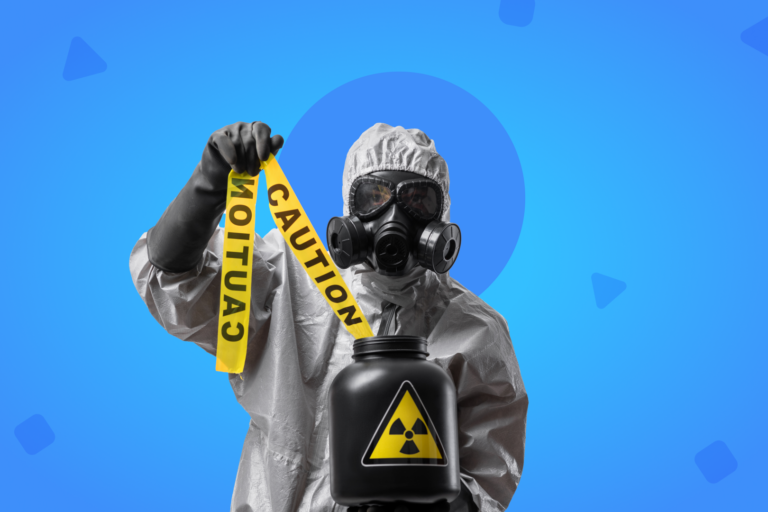Although the electronic checklist for Health Care implementation has been delayed due to staff resistance and lack of training, the use of these digital tools will help optimize both the provision of services and the management of technical and human resources in this critical sector for society.
The current environment of technological and cultural transformation requires companies to use modern management tools that allow better use of their technical, material and human resources.
Within the wide range of applications and digital solutions that meet this condition, electronic checklists stand out. Because they are designed to perform repetitive activities more efficiently, such as, for example, the systematic control of a set of technical requirements, or the orderly collection of critical data.
Its value has been proven repeatedly in various strategic activities, both industrial, productive and service, since they allow the worker or supervisor to carry out systematic checks of activities, actions, infrastructure or assets, with greater effectiveness, less time spent and minimum margins of error.
Advantages of checklists
Checklists have proven their importance in such critical activities as, for example:
- Safety review of machinery, tools and personal equipment.
- Control of contaminants and pathogens in food industry.
- Verification of irrigation systems and natural resources management in agribusiness.
- Supervision of accident protocols.
- Maintenance and repair of equipment and infrastructure.
Checklists contribution to optimize health management
From this point of view, the intrinsic value of electronic checklists can be extended to practically all aspects that govern people’s lives, such as health care, for example.
Various technical studies, carried out both in Chile and around the world, have shown that numerous systematic and daily activities in this sector can be carried out more efficiently thanks to the support of an electronic checklist.
Some of these potential advantages are the following:
- Reduce medical errors in the admission of patients to emergency areas.
- Improve general standards of patient care and procedures.
- Optimize stock control in pharmacies and medical or surgical arsenals.
- Maximize the use of resources during vaccination processes or campaigns.
- Make more efficient the control of patients in day or night clinical rounds.
- Reduce the cost of physical supplies, such as paper, in the design and control of medical records.
- Improve control of logistics networks and cold chains of medical resources.
Each of these advantages also allows improving the working conditions of medical personnel, including doctors, nurses, armorers and administrative staff. Characteristic especially valuable due to the high stress conditions with which each of these professionals usually perform, and which usually causes forgetfulness, loss or confusion.
In fact, electronic health checklists have proven useful for:
- Improve safety in care.
- Reduce errors and adverse events.
- Improve the exchange of information.
- Increase the cohesion of teamwork.
The human (vital) factor
Despite the fact that electronic checklists applied to the health area have, in general, a positive impact on patient care, resource optimization and time management, obtaining the adherence of healthcare personnel has not been an easy task.
Some barriers that directly influence the acceptance of these digital tools have to do with the lack of personnel willing to be trained, and with the fact that professionals in the sector perceive this instrument as an “imposition”. In addition, many of them consider that the need to carry out training or improvement courses generates a waste of time and interrupts the rhythm of daily work.
Likewise, it has been reported, in some clinics and hospitals, that the staff considers that the checklist does not favor internal communication, delays work and increases the workload.
This negative perception is generally based on the resistance to change of a significant part of the staff. Condition inherent to global society, and not only to the health sector in particular.
This situation indicates that, before implementing electronic checklists, it is necessary to know the perception of health professionals regarding their use and usefulness. In addition, it is important to study and know what are the routine safe practices carried out on each health care institution, and what are those forgotten or omitted during the daily care process.
In this way, it will be possible to determine the weak points that the officials themselves recognize as such within the system. This would provide a valuable starting point for the use of electronic checklists, as the staff themselves would see their usefulness in optimizing those work areas that require direct intervention and improvement.
In order to achieve this objective, it is necessary to create programs that have a positive impact on the people who work in this critical area. In this way, it is vital achieve adherence to the principle that technology does not replace human capital, but rather represents decisive support for improving practices or procedures that already had flaws. A path that would lead to improving people’s health.
In the same way, it is convenient to evaluate, through surveys, Focus Groups, personal interviews or other analysis tools, the real disposition that people will have to implement these technological tools in their respective work units.
Successful Cases
In 2015, the World Health Organization, WHO, launched the “Safe Childbirth Checklist” (SDL), which was developed to improve essential practices in maternal and perinatal care. This list is made up of 29 behaviors that should be reviewed in 4 specifics moments of childbirth care:
- Income of patient
- Before birth
- After birth
- Before discharge.
There are several efforts currently oriented to implement this checklist in different parts of the world. A task that will be even easier if the different health care institutions decide to use electronic systems that replace paper and minimize the margin of error.
Another area where the value of electronic checklists has been well established is in the planning and management of human resources for health. This step is important, since it guarantees the preparation of the personnel for the following aspects:
- Provide better responses to health crises.
- Improve the capacity of professionals to deal with an increase cases of diseases or pathologies.
- Maintain the strength of essential services.
- Ensure sufficient and continuous staffing of more efficient and productive professionals.
In this way, electronic checklists in human resources management would help, for example, to ensure the availability of workers in areas with high demand; to have the necessary capacity to adequately respond to unexpected increases in the demand for care, or to expand coverage services for the population.
Electronic checklists can also show their full value in the current pandemic context, since they help complement actions and interventions related to the management of technical and human resources (such as stock inventories, vaccination forms or review in the state of logistics chains), which are essential for the success of the respective vaccination campaigns against the various strains of COVID-19.
Other areas where preliminary steps have been taken to introduce electronic checklists are medical rounds. This is a field that offers wide chances of success, since the doctors on duty can carry out their shifts equipped with a mobile device with the ability, for example, to scan QR codes.
This would facilitate the analysis of vital signs, clinical history and other indicators that may be considered on the list, according to the internal procedures of each institution. An advance that, objectively, facilitates the control of patients and the evolution of their symptoms.
There have also been attempts to use checklists in some surgeries, but this is an area where the interaction between the personnel in charge still needs to be perfected. As these are high-urgency procedures, the human tension component does not contribute to maintaining a flow of communication that facilitates the verification of the different points included in the respective lists.
These examples prove, with different but objective certainty, the need to advance in the implementation of this technology in the health care area, taking into account its usefulness to ensure a better quality of care for people’s health and lives.
If you want to know more about the characteristics and advantages of the DataScope checklists, click here.






